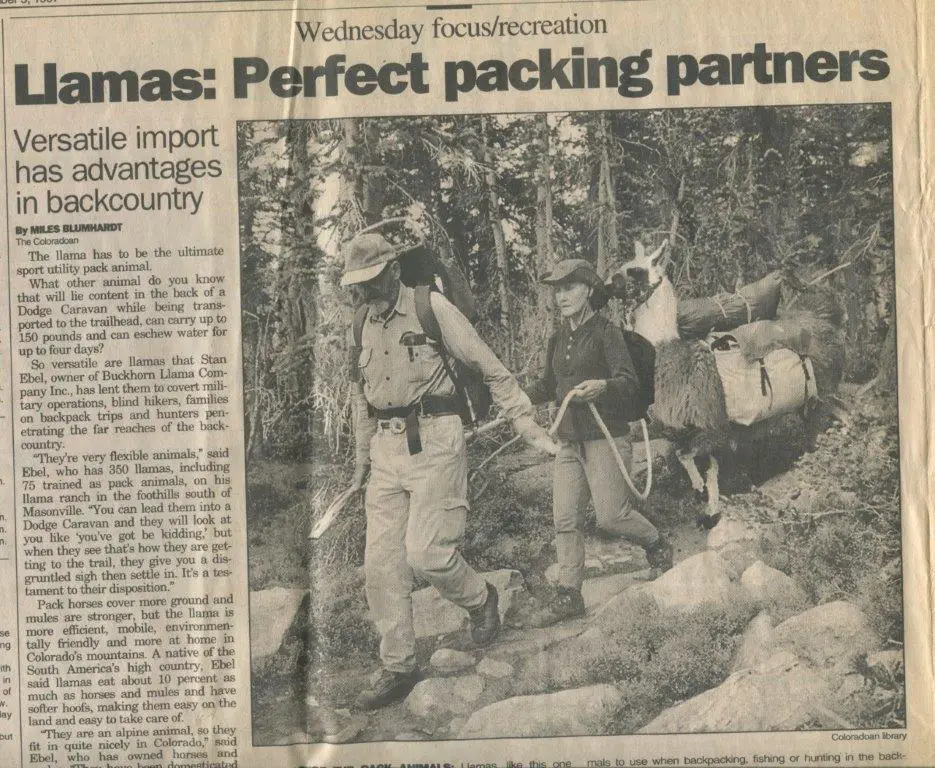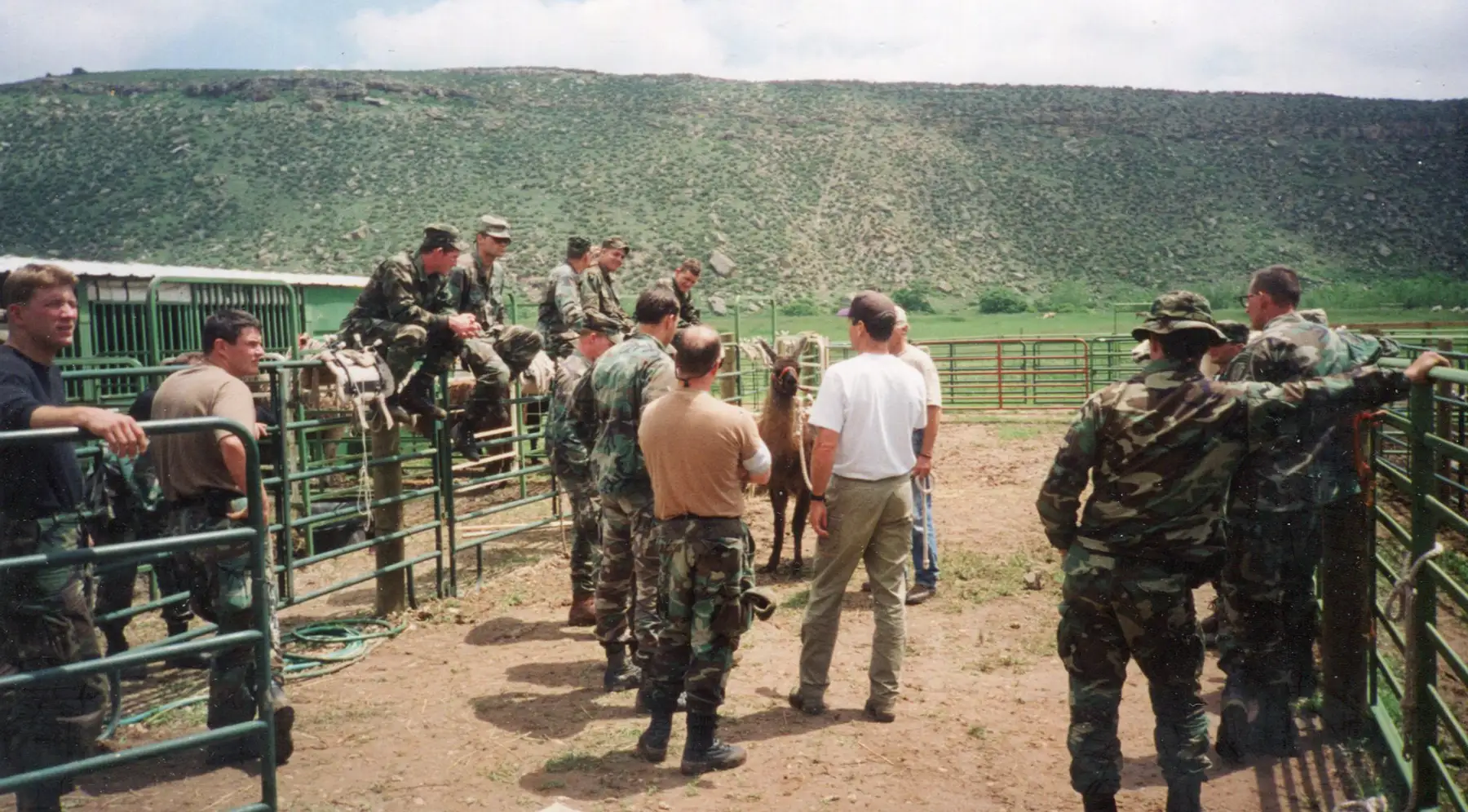These hardy, intelligent, and adaptable animals have a combination of qualities that make them valuable in many military settings. Llamas are native to the Andes Mountains of South America, where they have been used for centuries as pack animals. Their ability to navigate rugged terrain and carry heavy loads while requiring minimal resources makes them a natural asset for military operations in rough terrain.
How Llamas Can Assist Troops
1. Superior Pack Animals for Rough Terrain
Llamas are naturally able to traverse mountainous and rocky landscapes that are inaccessible to military vehicles. Llamas browse low grade forage and are adapted to maintaining on intermittently available water. Compared to a horse or mule they consume 10% the feed or water, a distinct advantage in the harsh environments and limited supply lines typical to the geography of foreign military operations. Their rolling/pacer gait enables them to smoothly carry heavy loads (+/- 100#) in steep terrain, on or off-trail. Llamas have been used to transport supplies, weapons systems, sensitive optics and computer equipment, and medical supplies for troops operating in isolated regions
2. Stealth and Low-Profile Movement
Llamas are virtually silent compared to mechanical ground and air support or traditional pack animals. This makes them ideal for reconnaissance and resupply missions where stealth is critical. Their ability to blend into the environment with minimal noise is a strategic advantage in special operations. Llamas have an alert awareness and can detect unfamiliar movements, scents, or subtle changes in their surroundings. Llamas can provide an early warning system alerting troops to potential threats such as approaching enemies or ambushes.
90% of special operations are conducted in dark or low light environments. Llamas’ acute night vision, coupled with their controlled demeanor, make them a dependable and self-sufficient asset in typical recon environments.
3. Quiet Demeanor and Controlled Reactions
Llamas’ low key, tractable nature make them predictable in combat situations. Hunting use and exposure to simulated fire fights have shown them to adjust to gunfire in a controlled manner. Adaptability to a wide array of transport options is further facilitated by their demeanor.
Pack llamas typically weigh 350-400#, are quite nimble, and easily train to assume a recumbent posture. This makes them capable of adapting to a wide array of transport options via ground, air, or water. Ground transport vehicles are most common, but planes, helicopters, air boats, kayaks, and even gondolas have been used. They have been crated and dropped by parachute to remote locations in supply ops.
4. Conclusion: Potential for Light Cavalry and Tactical Support
Llamas can assist special operations forces in unconventional warfare and could serve as a valuable extension of a military unit. Countries with mountainous or rugged terrain, such as Afghanistan, Peru, Eastern Europe, and the Middle East could benefit from incorporating llamas into military operations. Special forces and remote patrol units can leverage their mobility, endurance, and quiet movement to enhance their operational capabilities.

